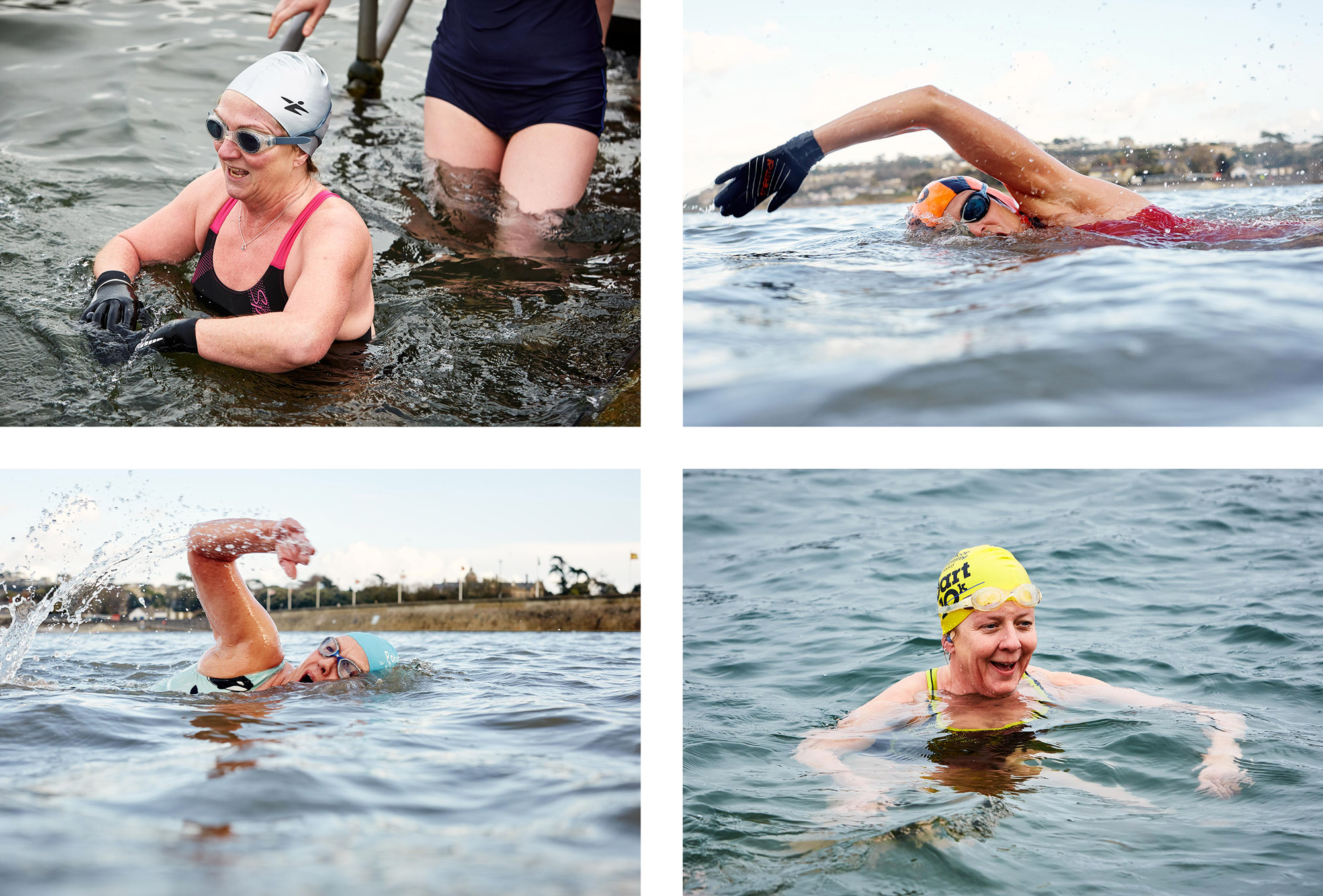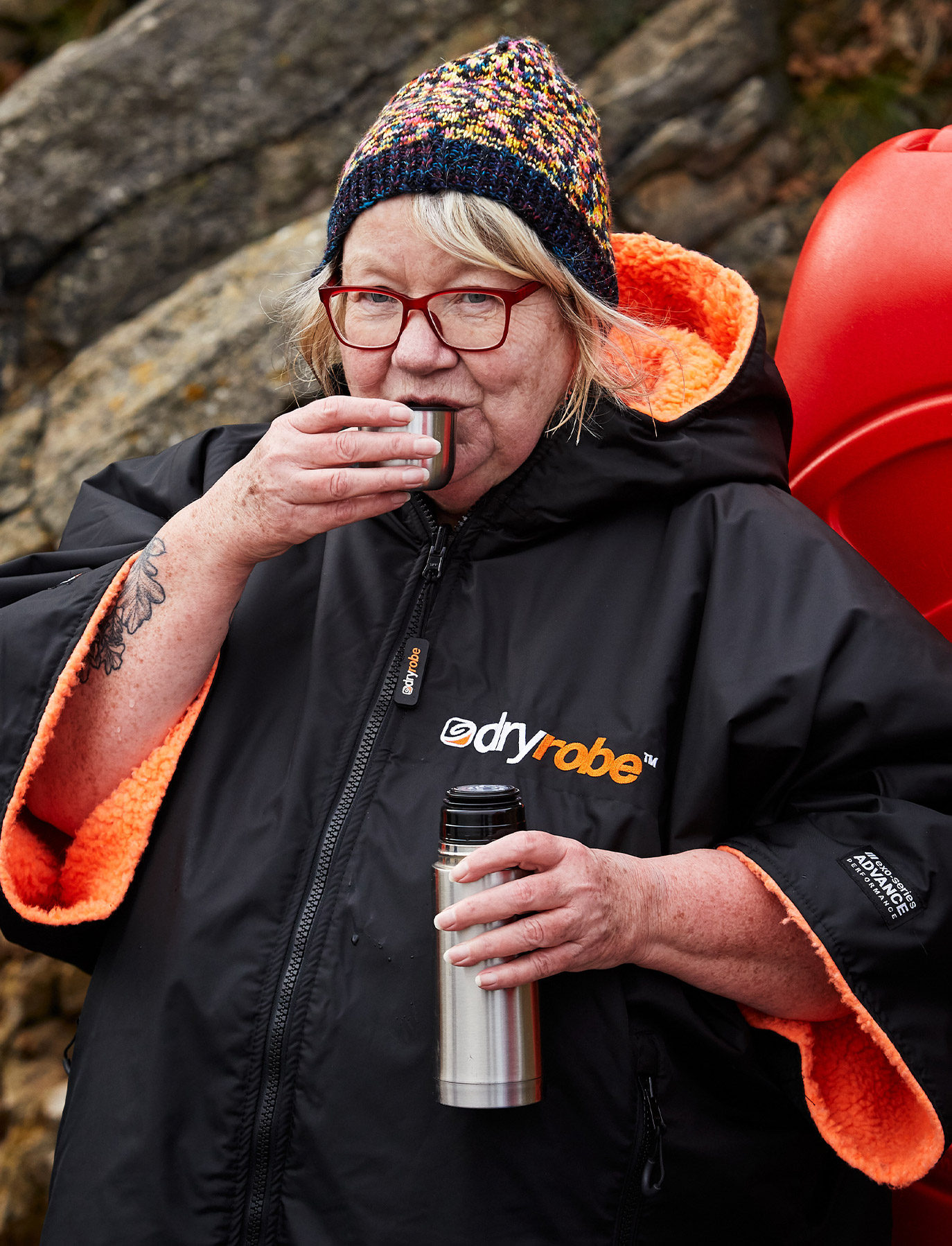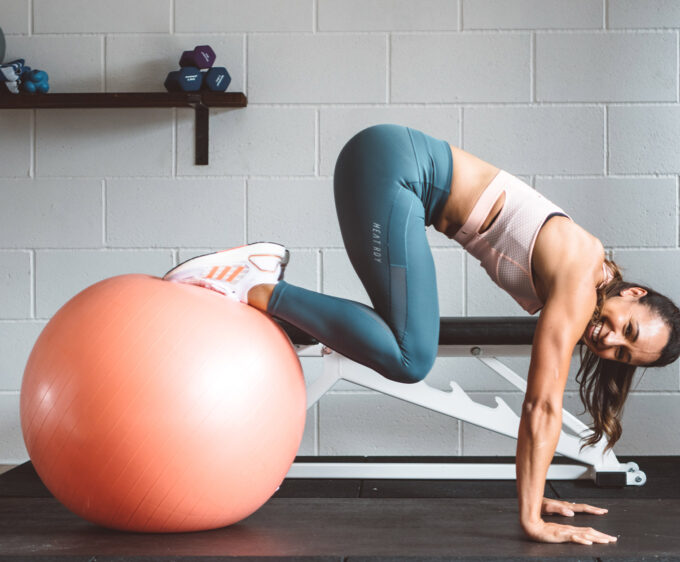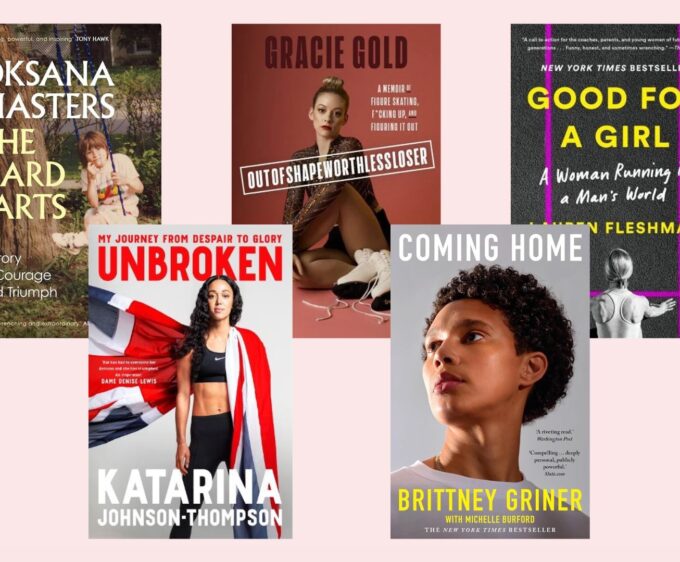
Sub-Zero Heroes
Bubbling hot tubs are the last thing on these women’s minds – they’re all about sub-zero dips in near-frozen lakes. Glorious finds out what motivates them to go to such extremes
By Rachel Ifans
Photography by Richard Johnson
I’m sitting with a group of women, looking at photos of them that were taken at the start of their journey as cold water swimmers. It’s a joyous and beautiful collection of pictures that burst with character, strength and elation. “There was one time when we were in the water and then there was a big rainbow over the River Severn,” says Claire Stone, one of the cold water swimming enthusiasts in the shots. “It was blue sky and I was swimming outdoors in the middle of winter and I remember thinking, if I died right now, I wouldn’t mind.”

Winter swimming, Claire says, is more about the experience than about the performance. Although it involves some technique and a lot of knowledge about the physiological effects of freezing water on the body, it’s not about getting better, jumping higher or running faster, and you don’t compete with yourself or others. Instead, cold water swimming is about the feeling it gives you before, during and afterwards. It’s about incredulity and invincibility in equal measure, says Row Clarke, leader of the Winter Warriors, the swimsuited heroes in the photos. “You’re like, look at me, I’m just me, and yet I’m able to get into this incredibly cold water. And you feel that way every time you swim. Even now after seven years, I get butterflies as I’m driving to the lake on a really cold day and I’m thinking about what a really brave thing it is to do.”

Row set up Winter Warriors in Clevedon near Bristol in 2019. She’d done a 10K river swim and wanted to find a way to keep swimming through the winter so she trained as an open water swimming coach. She had no idea whether people would come to Clevedon Marine Lake on freezing cold Friday mornings to join her new group, but come they did. And, three winters later, they continue to do so – like swimsuited, bobble-hatted lemmings in search of understanding, camaraderie, happiness, calm and that elusive feeling of being alive. Viv Hollis, another of Row’s converts, backs up the others. “You’re going in, it’s two degrees and everybody is telling you you’ll be in trouble if you don’t listen to what Row is saying. This is serious. So you go in and you’re watching out for everybody, you congratulate each other, and then you’re all giggling and on a high.”
With winter swims, you stay in for a shorter time than pool swimming or wild swimming, you swim less or not at all, and you only take part from October to April each year. Most of her group members bring a swimsuit, a hat and some kind of desire for healing, says Row. She explains: “I’ve suffered from anxiety and had body dysmorphia and I felt so healed by cold water swimming when I started. I wasn’t alone; I’ve had someone in the group with complex PTSD, people who suffer from anxiety, depression and overwhelm, and I have quite a lot of women who are peri-menopausal, menopausal or postmenopausal. I’ve had a woman who had just been bereaved, someone who’d had a double mastectomy and a couple of swimmers who suffer from chronic illness. All the people who come seem to be looking for something.”

Joyous

Vix Ellis, another swimmer in the group, backs Row up on the power of the cold water. “Someone in the group who had complex PTSD was telling me how they were depressed and hadn’t felt emotions for 10 years as a result of the medications they were on. One morning when we swam, they said they could feel for the first time in so long. It was incredibly emotional and we both started to cry.” For many of the group, the effect is not that extreme but all have got mental health benefits from it or at least found it to be a deeply therapeutic experience. Claire says: “It sounds cheesy, but you feel so alive in the moment and you can’t think about anything else. It’s quite mindful.” The extreme nature of what they’re doing – essentially dipping their bodies into near-freezing water for a few minutes or so and then getting out again – is a powerful force, says Claire. “I can get over the fear and the worries because I know I’m going to feel absolutely blissful afterwards.”
Vix agrees. “You leave a lot of anxiety and self-consciousness behind because there’s no space for it. It’s like you get in and that stuff gets left as a film on the water and you sort of swim away from it.” Vix got so fascinated by the benefits of winter swimming on mood, physical wellbeing and mental health that she wrote her dissertation for her MSc in Psychology on it.
She explains a bit of the science behind cold water therapy: “Firstly, there are the physiological effects, like changes in the alkalinity levels of your blood and your immune response. Then there are the benefits associated with mental health: not only is blue therapy now being recommended and prescribed by doctors for depression and similar issues, there’s also the therapeutic benefit you get from a shared experience, from being bonded by a crazy thing that you’re all doing together. Mastery is also a well-researched area of wellbeing and people get a lot from doing something that’s really challenging. And finally, there’s the theory that the more you expose yourself to cold water, the more you temper your fight-or-flight response so it becomes less responsive and therefore has less impact on your wider life.”

It’s hard enough taking your clothes off outside on a winter’s morning, never mind immersing yourself in really cold water. It may be that asking for tricks on how to avoid the worst of the horror, or what you can do to get accustomed to the cold, is missing the point somewhat, but I ask the women anyway. “We used to meet up once or twice a week with Row,” says Viv, “and she would teach us how to not freeze, how to be mindful of what we were feeling, how to swim a better stroke, and how to be more efficient in the cold water.”

It’s a serious business being a cold swim group leader and Row watches them like a hawk, especially when they get out. She explains: “When you first get into cold water, your heart rate and your blood pressure go up in response to the cold water shock. Some people are very sensitive to their heart rates and that sudden increase can make them panic so I’ve found it helps to get their heart rate up a bit before they go in. Afterwards is the most dangerous time in terms of your body temperature; when you get in the water, as soon as your skin receptors detect the cold water, the capillaries in the skin in your hands and feet constrict so that the majority of your blood stays in your core to keep your major organs oxygenated and warmer. When you get back out again, those capillaries re-open and this means that your core body temperature can carry on dropping for around 30 minutes after you get out.”
Sub-Zero

For Claire, this is her fourth year of winter swimming. She laughs: “I pretend I’m excited but actually, I’m just scared. However, because I’ve made the decision to do it when I’m at home, before I’ve even packed up the car and driven there, it’s easier. I know I’m going to do it, even if I’m scared and even if it’s freezing cold.” The Winter Warriors groups are almost exclusively made up of women. And women of all different ages, shapes, demographics, levels of fitness and swimming ability. Its inclusivity is another weapon in winter swimming’s armoury, Vix says: “It’s totally accessible. You just have to be able to walk down steps and control your breathing and that’s enough – if you want to just do that. You only need to stay in for two minutes anyway to get maximum benefit from the water.” “There are a lot of older people who winter swim and people who you wouldn’t class as athletes in terms of their body shape or their age, but we all do something that is actually really quite extreme,” says Claire.
One of Row’s founding aims was to foster camaraderie between groups of people who wouldn’t ordinarily have met, and the friendships that have grown from the original weekly swim group are still rock solid even if the women don’t swim together weekly now. Row says: “Real bonds are created from this experience together. You’re very vulnerable because you’re almost naked in freezing cold water so you really help each other.” Vix remembers the instant connections they made. “Because we were doing this crazy thing together and our guard was totally down, stuff would blurt out of our mouths about what was going on in our lives that we might not have felt comfortable to share with anybody else. Viv reflects, looking back at the photos again: “We were all there for the swimming but every now and then we would share a little bit of something. These people wanted to know about you in all your stages of life – when you were at college, or when you first had children, etc. – and they wanted to support you.”


We talk about the photos and how it felt to have a big lens pointed at you during a swim. The group was approached by sports photographer Richard Johnson. He says: “My overarching theme when looking for personal projects is to highlight people, groups or clubs doing interesting things that have a positive effect on their members or surrounding communities. I’m always on the lookout!” Claire remembers that Richard wanted to come along to a few sessions and get in the water with them: “I’m not body confident and I’m not body unconfident. This is my body; this is what it is. But it was quite weird to think that someone would come and take pictures of me.” She goes on: “Most women don’t relish the thought of having their picture taken in a horrible old cossie and I wasn’t thrilled by the idea but at the same time, I thought if more people saw pictures of normal people doing this, maybe they would try it too.”
Community

For Richard, it was an inspiring experience. He says: “It was amazing to witness their dedication, week in and week out, no matter the weather, to get out there. I think the photos evoke the joy, confidence and satisfaction that comes with pushing oneself beyond one’s comfort zone.” Row finds being photographed an awkward experience on dry land but has found that when she’s in the water, something changes. “Even if you’re body conscious,” she says, “you feel so invincible when you swim in winter. It’s like you’re in an enormous net. The women in those photographs really glow with a sense of pride and bravery.” For Vix, it’s all about the serenity you see in the shots. She says: “My favourite photo is of Viv. She just looks so calm and lovely and you think, wow, that’s totally captured everything about this thing that we do.”
The feelings you see in the photos are real; every woman who’s been a Winter Warrior over the years has felt a shift in themselves. Vix has seen an increase in her body confidence: “I cannot tell you how much difference it’s made. For about 25 years of my life, I wouldn’t wear shorts because I hated my legs. Swimming has changed how I feel about the way I look and it’s so liberating. I look at other people in a different way now too; I see lumpy, bumpy people and I think it’s so beautiful, because they just don’t care.” For women, there are still relatively few places where we can truly feel that liberation, such is society’s lens on our looks.

For Viv, it affected her confidence at work: “I was a manager in a community nursing team at the time and I had somebody in my team who was very challenging to manage. I used to remind myself, as I was doing hard things at work, that if I could get in one-degree water, I could do anything.” And, perhaps more importantly, it reinforced her sense of self. “When you get older,” she explains, “it’s easy to turn into magnolia; you just fade into the background. Of course, you celebrate bright young people and you’re excited that they’re coming up behind you but sometimes you feel like you’ve just faded away. Winter swimming made me smile and made other people look at me. What a gift to have been given.”

Photography by Richard Johnson
Editorial Design by Root
Click here for further information on the Winter Warriors







